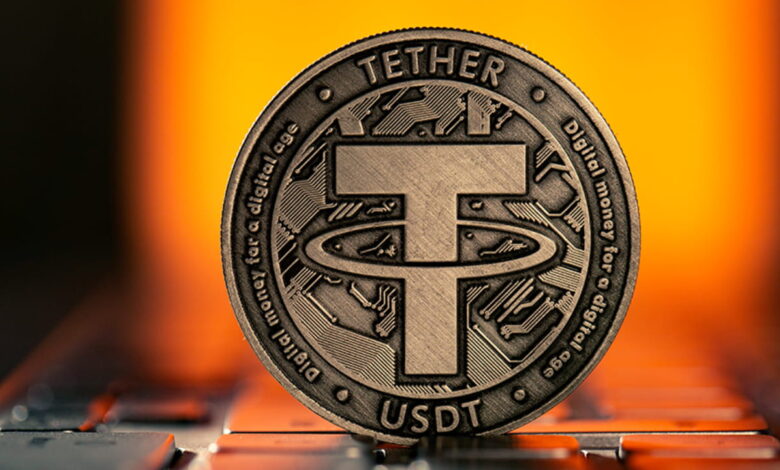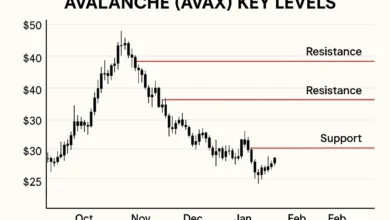
Tether USD₮ RGB Bitcoin technology prepares to transform how we conduct private, offline digital transactions. This innovative integration represents a significant leap forward in blockchain privacy and accessibility, promising to address long-standing challenges in the cryptocurrency ecosystem.
Tether USD₮ RGB Bitcoin payments are poised to revolutionize the way users interact with digital assets, offering unprecedented levels of privacy and offline functionality. As the world’s leading stablecoin issuer, Tether’s decision to implement RGB protocol technology marks a pivotal moment in the evolution of Bitcoin-based financial infrastructure.
The announcement of Tether USD₮ RGB Bitcoin integration has sent ripples throughout the crypto community, with industry experts predicting this could be the catalyst for mainstream adoption of private digital payments. This comprehensive guide explores everything you need to know about this revolutionary development and its potential impact on the future of digital finance.
What is the RGB Protocol and How Does It Enable Tether USD₮ RGB Bitcoin Payments?
The RGB protocol represents a cutting-edge Bitcoin layer-2 solution that enables smart contracts and token issuance directly on the Bitcoin blockchain while maintaining enhanced privacy features. Unlike traditional blockchain solutions, RGB operates as a client-side validation protocol, ensuring that transaction details remain private between participating parties.
RGB protocol functionality centers around the concept of “single-use seals,” which create unique, non-reusable transaction outputs on the Bitcoin blockchain. This innovative approach allows for complex smart contract operations while preserving the security and decentralization characteristics that make Bitcoin the world’s most trusted cryptocurrency network.
The integration of Tether USD₮ RGB Bitcoin payments leverages these advanced cryptographic techniques to create a seamless user experience. Users can conduct transactions that appear as regular Bitcoin transactions on the public ledger, while the actual USDT transfer details remain completely private to external observers.
Key Technical Advantages of RGB Protocol
Private Bitcoin transactions through the RGB protocol offer several distinct advantages over conventional blockchain solutions. The protocol’s client-side validation approach means that only the parties directly involved in a transaction have access to the complete transaction details, significantly enhancing user privacy.
Offline cryptocurrency payments become possible through RGB’s innovative design, allowing users to prepare and sign transactions without requiring constant internet connectivity. This feature is particularly valuable in regions with limited internet infrastructure or for users who prioritize maximum security through air-gapped transaction signing.
The scalability benefits of RGB protocol are substantial, as the majority of transaction data is stored off-chain while maintaining Bitcoin’s robust security guarantees. This approach dramatically reduces blockchain bloat while enabling complex token operations that would be impossible or prohibitively expensive on the main Bitcoin network.
Tether’s Strategic Move: Why USD₮ RGB Integration Matters
USDT RGB integration represents more than just a technical upgrade; it signifies Tether’s commitment to expanding the utility and accessibility of its stablecoin across diverse use cases. By implementing Tether USD₮ RGB Bitcoin functionality, the company addresses growing demand for privacy-preserving financial tools in an increasingly surveilled digital landscape.
The strategic importance of digital asset privacy cannot be overstated in today’s regulatory environment. As governments worldwide implement increasingly stringent cryptocurrency regulations, the ability to conduct legitimate private transactions becomes essential for preserving individual financial sovereignty and commercial confidentiality.
Tether stablecoin adoption has reached unprecedented levels, with USDT serving as a primary medium of exchange in numerous emerging markets. The addition of RGB protocol capabilities positions Tether to serve users in regions where financial privacy and offline transaction capabilities are not just preferences but necessities for economic survival.
Market Impact and Industry Response
The announcement of Tether USD₮ RGB Bitcoin integration has generated significant interest from institutional investors and retail users alike. Market analysts predict this development could accelerate enterprise adoption of Bitcoin-based payment systems, particularly in sectors where transaction privacy is paramount.
Private Bitcoin transactions have long been sought after by legitimate businesses seeking to protect sensitive commercial information. The RGB protocol implementation addresses these needs while maintaining compliance with existing regulatory frameworks, creating a balanced approach to financial privacy.
Industry leaders have praised the USDT RGB integration as a natural evolution of Bitcoin’s capabilities, demonstrating how layer-2 solutions can enhance the network’s functionality without compromising its core principles of decentralization and security.
Technical Deep Dive: How Tether USD₮ RGB Bitcoin Payments Work
The underlying architecture of Tether USD₮ RGB Bitcoin payments involves sophisticated cryptographic protocols that ensure both security and privacy. When a user initiates a USDT transfer using RGB protocol, the transaction is structured as a standard Bitcoin transaction with additional commitment data stored client-side.
RGB protocol utilizes a concept called “colored coins” but implements it in a far more advanced manner than early Bitcoin token experiments. Each USDT token is represented by specific Bitcoin outputs, with the RGB protocol handling the complex logic required to track token movements and prevent double-spending.
The private Bitcoin transactions enabled by this system work through a combination of Bitcoin Script and RGB’s client-side validation rules. While the Bitcoin blockchain records the movement of satoshis, the actual USDT transfer details are communicated directly between the sender and receiver through encrypted channels.
Transaction Flow and User Experience
Offline cryptocurrency payments through Tether USD₮ RGB Bitcoin follow a streamlined process designed for maximum user convenience. Users can prepare transactions using compatible wallet software, sign them offline, and then broadcast the Bitcoin portion when internet connectivity is available.
The user experience of USDT RGB integration closely mirrors traditional Bitcoin transactions, with additional features for managing token balances and viewing transaction history. Advanced users can leverage the protocol’s privacy features to conduct business without revealing sensitive financial information to competitors or adversaries.
Digital asset privacy is maintained throughout the transaction lifecycle through careful implementation of cryptographic commitments and zero-knowledge proofs. Even sophisticated blockchain analysis tools cannot determine the amount or recipient of USDT transfers conducted through the RGB protocol.
Also, More: XRP Price Prediction 2025, Ripple News & Brett Token Surge
Real-World Applications and Use Cases
Tether USD₮ RGB Bitcoin payments unlock numerous practical applications across various industries and geographic regions. In emerging markets where capital controls limit traditional financial access, these private, offline-capable transactions provide crucial financial infrastructure.
Private Bitcoin transactions through the RGB protocol offer particular value for businesses operating in competitive markets where transaction privacy is essential for maintaining strategic advantages. Companies can conduct supplier payments, employee compensation, and other sensitive financial operations without revealing proprietary business relationships.
The offline cryptocurrency payments capability addresses critical needs in areas with unreliable internet infrastructure. Users in remote regions or those prioritizing security can prepare transactions offline and broadcast them when convenient, maintaining financial access regardless of connectivity constraints.
International Remittances and Cross-Border Payments
RGB protocol technology significantly improves the efficiency and privacy of international money transfers using Tether stablecoin. Traditional remittance services often charge high fees and require extensive documentation, while Tether USD₮ RGB Bitcoin payments offer a more efficient alternative.
Cross-border businesses benefit enormously from USDT RGB integration, as they can conduct international transactions with enhanced privacy and reduced fees compared to traditional banking systems. The stability of USDT, combined with Bitcoin’s global accessibility, creates an ideal platform for international commerce.
Digital asset privacy features make these cross-border payments particularly attractive for legitimate businesses seeking to protect sensitive commercial information from competitors while maintaining compliance with applicable regulations.
Security Considerations and Best Practices
Implementing Tether USD₮ RGB Bitcoin payments requires careful attention to security protocols and best practices. Users must understand the unique security model of the RGB protocol, which differs significantly from traditional blockchain architectures in its reliance on client-side validation.
Private Bitcoin transactions through the RGB protocol introduce new security considerations that users must address through proper wallet management and backup procedures. Unlike traditional Bitcoin transactions, where blockchain data alone is sufficient for recovery, RGB transactions require additional client-side data for full wallet restoration.
The offline cryptocurrency payments capability of the RGB protocol enhances security by allowing transaction preparation in air-gapped environments. However, users must carefully manage the synchronization process between offline transaction preparation and online broadcast to avoid potential security vulnerabilities.
Wallet Security and Key Management
USDT RGB integration requires sophisticated wallet software capable of managing both Bitcoin UTXOs and RGB asset data. Users must ensure their chosen wallet software implements proper security measures for protecting both Bitcoin private keys and RGB-specific asset information.
Tether stablecoin holdings in RGB format require specialized backup procedures that go beyond traditional Bitcoin wallet backup methods. Users should maintain comprehensive backups that include all necessary RGB protocol data to ensure full asset recovery in emergencies.
Digital asset privacy benefits are maximized when users follow established security protocols for managing RGB-compatible wallets, including the use of hardware wallets where available and proper operational security practices for transaction preparation and signing.
Regulatory Landscape and Compliance Considerations
The introduction of Tether USD₮ RGB Bitcoin payments occurs within an evolving regulatory landscape that varies significantly across global jurisdictions. Understanding the legal implications of enhanced privacy features is crucial for both individual users and businesses considering adoption.
Private Bitcoin transactions through the RGB protocol occupy a unique position in regulatory frameworks, as they maintain transparency on the Bitcoin blockchain while providing enhanced privacy for token-specific operations. This hybrid approach may offer compliance advantages in jurisdictions with specific reporting requirements.
The RGB protocol implementation by Tether demonstrates how privacy-enhancing technologies can be developed and deployed while maintaining awareness of regulatory considerations. The protocol’s design allows for optional transparency features that can accommodate various compliance requirements.
Compliance Tools and Reporting Features
USDT RGB integration includes optional features that enable compliance with various regulatory reporting requirements without compromising the protocol’s privacy benefits. Organizations subject to specific reporting obligations can leverage these tools while maintaining the operational advantages of the RGB protocol.
Tether stablecoin regulatory compliance has been a priority for the company, and the RGB implementation continues this tradition by providing optional transparency features that accommodate regulatory requirements in various jurisdictions.
Digital asset privacy regulations continue to evolve, and the RGB protocol’s flexible architecture allows for adaptation to changing compliance requirements without requiring fundamental protocol modifications.
Future Developments and Roadmap
The launch of Tether USD₮ RGB Bitcoin payments represents just the beginning of a broader ecosystem development roadmap. Future enhancements are planned to expand the protocol’s capabilities and improve user experience across various applications and use cases.
RGB protocol development continues with active research into additional privacy features, scalability improvements, and interoperability enhancements. These ongoing developments will further strengthen the value proposition of private Bitcoin transactions for both individual and institutional users.
The offline cryptocurrency payments capability of the RGB protocol opens possibilities for integration with hardware wallets, mobile devices, and other specialized payment infrastructure. Future developments may include enhanced offline functionality and improved user interfaces for mainstream adoption.
Ecosystem Growth and Adoption Metrics: Tether USD
The success of USDT RGB integration will be measured through various metrics, including transaction volume, user adoption rates, and ecosystem development milestones. Early indicators suggest strong interest from both technical users and mainstream applications.
The expansion of the Tether stablecoin into new protocol implementations reflects the company’s commitment to serving diverse user needs across various technical architectures and use cases. The RGB implementation joins other layer-2 solutions in Tether’s multi-protocol strategy.
Digital asset privacy demand continues to grow across various user segments, suggesting strong potential for Tether USD₮ RGB Bitcoin payment adoption as awareness and technical infrastructure mature.
Conclusion
The introduction of Tether USD₮ RGB Bitcoin payments marks a transformative moment in cryptocurrency evolution, combining the stability of USDT with Bitcoin’s security and the RGB protocol’s privacy features. This innovative integration addresses critical gaps in the current digital payment infrastructure while maintaining compatibility with existing Bitcoin ecosystem tools and services.
As private Bitcoin transactions become increasingly important for legitimate business and personal use cases, the RGB protocol implementation provides a robust foundation for future financial privacy innovations. The combination of offline capability and enhanced privacy creates new possibilities for cryptocurrency adoption in diverse global markets.
The success of USDT RGB integration will likely influence other stablecoin issuers and cryptocurrency projects to explore similar privacy-enhancing implementations. This trend toward digital asset privacy reflects growing user demand for financial sovereignty and commercial confidentiality in an increasingly connected world.











